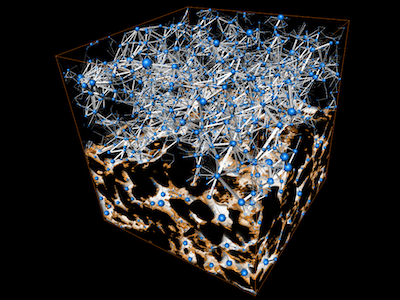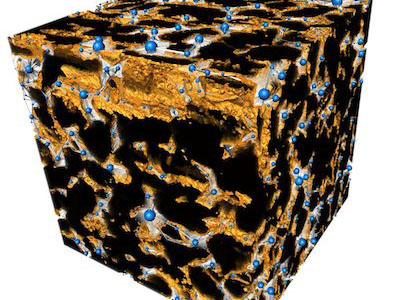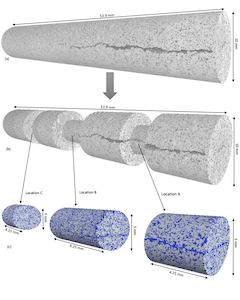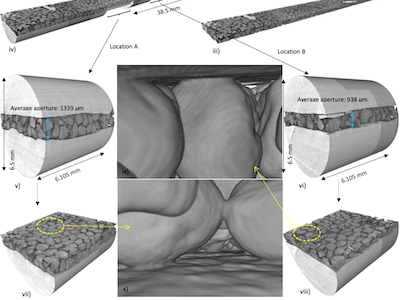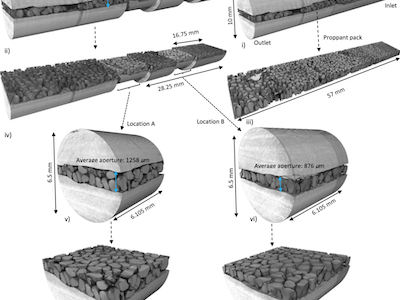Multiphase flow in porous media occurs in many natural and artificial processes, such as subsurface flow of hydrocarbons and brine, geologic storage of CO2, reactive transport through catalysts, and non-aqueous phase liquids (NAPL) migration in soil. Under the support of the rapidly developing high-resolution CT-imaging and computer technologies, pore-scale network modelling has emerged as an appealing approach to investigate the physical processes (e.g., fluid flow, displacement, and mass transfer) taking place in porous media with complex geometries.
The pore network modeling group currently works on incorporating more complex, but very important physics of multiphase flow processes, such as mass transfer and convection between different phases, into a more comprehensive dynamic flow model. A fully dynamic modeling approach is applied to better account for the complex dynamics of multiphase flows. In this dynamic flow model, viscous, capillary, and gravity pressure drops all are taken into account. Wetting-phase corner flow in capillary elements and adjustments of corner interfaces between wetting and non-wetting phases are also consistently modeled. To upscale and simulate the flow processes in core-scale porous media, a heavily parallelized computing scheme is utilized with the help of an in-house high-performance computing cluster consisting of 60 nodes and more than 1,000 computing processors. This dynamic flow model provides a platform to investigate various flow processes in porous media at the core scale using fundamental pore-scale physics.
The aim of this research is not only to provide fundamental guidance for oil recovery process in petroleum engineering, but to aid applications in other science and engineering research areas, such as contaminant transport in groundwater and radioactive waste storage in the subsurface. It is anticipated that the final integrated multiphase flow model will have the capability to simulate and validate the fluid production, fluid saturation, and phase-distribution data generated directly from the state-of-the-art laboratories at the COIFPM.
GALLERY
